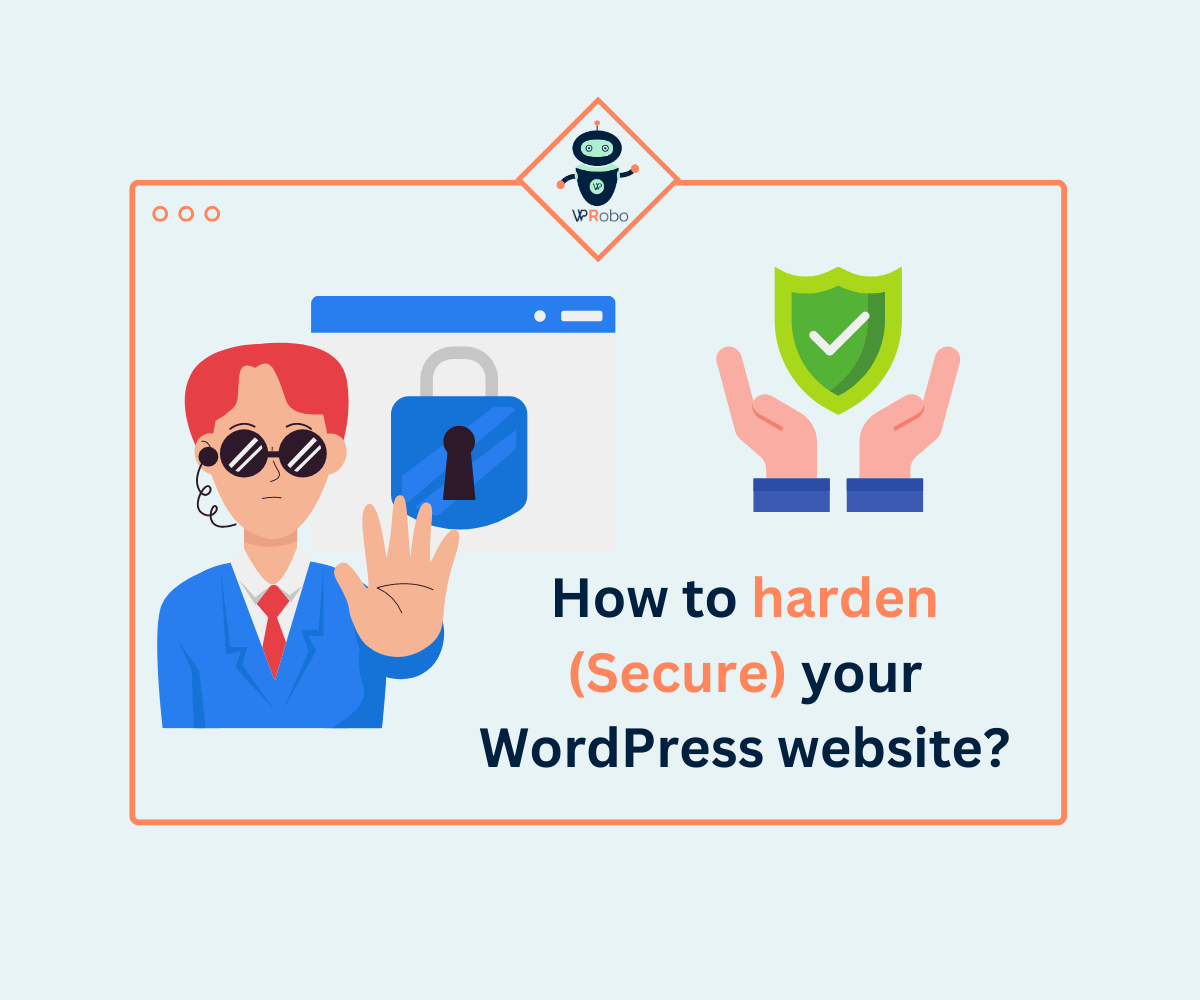How to harden (secure) your WordPress website?
Last time we provided some tips to secure your WordPress website, but today we’re taking it to the next level. As security is the most crucial component of creating a WordPress website, it is necessary to go over it once more but in greater detail. Although WordPress has faced security challenges in the past, it continues to be one of the most popular and reliable website creation platforms used by millions of users worldwide. Therefore, to maintain security and reliability, it is essential to take the necessary steps to protect your website from potential security threats.
Securing your WordPress website is crucial for several reasons. Firstly, a compromised website can cause significant damage to your brand’s reputation and result in the loss of customers’ trust. Secondly, hackers can use your website to spread malware or launch attacks on other websites, which can have legal implications and cost you money. In addition, securing your WordPress website is essential for maintaining the confidentiality and integrity of your data. If your website collects sensitive information such as personal or financial data, a breach could have severe consequences for both you and your customers.
In the following section, we will discuss some effective ways to harden your WordPress website and strengthen its security.

Use Secure Password:
Using a strong and secure password is one of the simplest yet effective ways to secure your WordPress website. A secure password should be at least eight characters long, including a combination of uppercase and lowercase letters, numbers, and special characters. Avoid using passwords that are simple to guess, such as “password” or “123456.”
You can also use the password generator to generate and store strong passwords. It is also recommended to avoid using common words, phrases, or personal information such as your name, birthdate, or address as your password.
Use a random username:
If you use simple or easily guessable usernames like admin then this is easier for hackers to brute-force their way into your website since they only need to guess your password. To make it more difficult for them, create a new, random username for your administrator account.
You have to select the secure username during the WordPress installation process, or you have to create another secure user with Admin privileges.
Use Captcha and Honeypots:
Captcha is a tool that helps prevent automated spam and abusive activities on your website by requiring users to solve a challenge to prove that they are human. Adding Captcha to your login page and forms can help prevent automated attacks and spam. Captcha requires users to verify that they’re not a robot by clicking on images or solving puzzles.
Honeypots, on the other hand, are invisible fields added to forms that are meant to be ignored by humans but detected by bots. If a bot fills in the honeypot field, the submission is flagged as spam. This can help prevent automated spam submissions on your website. By using both Captcha and Honeypots, you can enhance your website’s security and protect it from spam and other malicious activities.
Implement 2-Step Verification for Login:
Two-step verification, sometimes referred to as two-factor authentication, increases the security of the login procedure on your website. Two-factor authentication adds a layer of security to your WordPress website. It requires users to provide two types of authentications before gaining access to the website. The first authentication is the traditional username and password. The second authentication is usually a code that is sent to a mobile device or generated by an app. This code is unique and changes frequently, making it much harder for an attacker to gain access to the website.
With 2-step verification enabled, even if an attacker has access to the user’s login credentials, they still need access to the user’s mobile device or app to complete the login process. This significantly reduces the risk of unauthorized access to your website.
Disable Directory Indexing:
Directory indexing is a feature that allows anyone to view a list of files and directories on your website. This can be a significant security risk because it makes it easier for attackers to locate and exploit vulnerabilities in your website. By disabling directory indexing, you prevent unauthorized access to the contents of your website’s directories.
For example, if an attacker knows the location of a file on your website that contains sensitive information, they can easily find it if directory indexing is enabled. They can then use this information to launch attacks against your website or steal sensitive data. By disabling directory indexing, you reduce the visibility of your website’s directories and files. This makes it much harder for an attacker to locate vulnerabilities in your website and reduces the risk of unauthorized access.
Change Default WordPress Admin Dashboard URL:
One of the most common ways for attackers to gain unauthorized access to a WordPress website is by targeting the default login URL. By default, the login URL for WordPress is usually https://yourwebsite.com/wp-admin or https://yourwebsite.com/wp-login.php. Attackers can use automated tools to brute-force their way into your website by repeatedly trying different username and password combinations.
Changing the default WordPress admin dashboard URL can make it much harder for attackers to locate the login page. This can significantly reduce the risk of brute-force attacks and unauthorized access to your website.
Continuously Monitor Your Website Performance:
Website performance monitoring is an essential part of website security. By continuously monitoring your website’s performance, you can quickly identify any issues that could potentially lead to a security breach. For example, if your website suddenly starts experiencing slow response times or increased downtime, this could be a sign of a security issue.
Monitoring your website’s performance allows you to quickly identify and address any issues before they become serious security risks. Additionally, monitoring can help you identify areas of your website that can be improved to enhance the user experience.
Monitor the Uptime of Your Website:
Uptime monitoring is another important aspect of website security. By monitoring the uptime of your website, you can quickly identify any downtime that could be caused by a security breach or other issues. Downtime can be caused by a variety of factors, including server issues, network problems, and security breaches. Uptime monitoring allows you to quickly identify and address any downtime issues before they become serious security risks.
Monitoring your website’s uptime is important to ensure that it’s available and accessible to users at all times. Downtime can result in lost revenue, decreased user engagement, and damage to your website’s reputation. By monitoring your website’s uptime, you can quickly identify and resolve any issues that may cause downtime and ensure that your website is always available to users.

Keep Updating WordPress Core, Plugins, and Themes:
Keeping your WordPress core, plugins, and themes up to date is crucial for maintaining your website’s security. Developers regularly release updates to address security vulnerabilities, and bug fixes, and improve website performance. Outdated versions of WordPress, plugins, or themes can be vulnerable to attacks from hackers.
For your WordPress website to remain secure and responsive, you must always use the most recent versions of the WordPress core, plugins, and themes. Yet, manually maintaining your website may be tiresome and time-consuming. So, if you contact WPRobo, you can surely take advantage of our services and automate the process of updating your WordPress core, plugins, and themes. This ensures that your website is always running the latest, recent versions without any effort on your side.
Update Any Custom Plugin to Meet with the Latest Updates:
If you have custom plugins installed on your website, it’s essential to update them to meet the latest updates. These custom plugins may not receive automatic updates from WordPress, making them vulnerable to security breaches. WPRobo can help you update your custom plugins automatically to ensure that your website is up-to-date and secure.
Our services allow you to manage and update all your plugins, including custom ones. Please see our other services as well.



